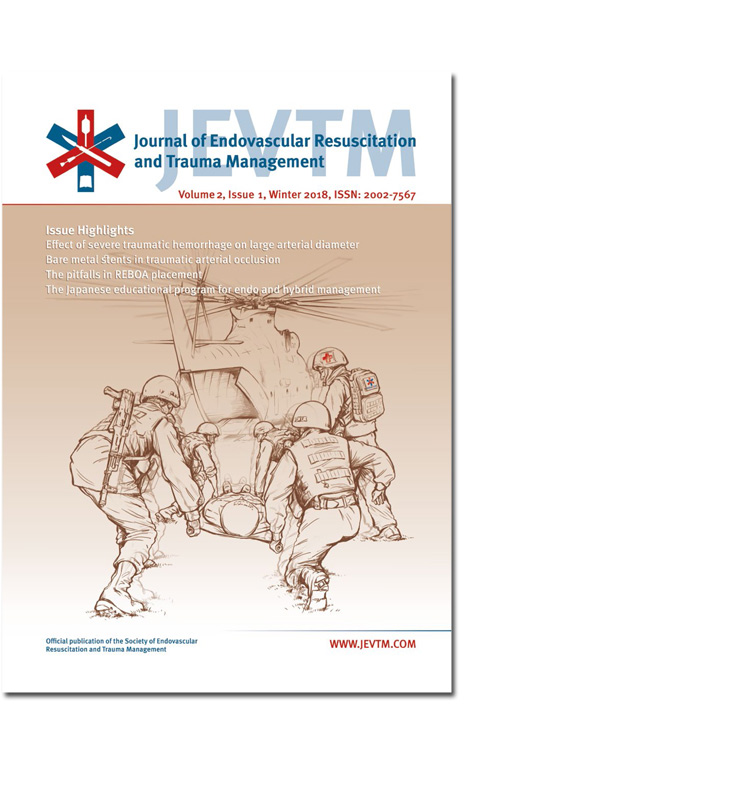Effect of Severe Traumatic Hemorrhage on Large Arterial Diameter as Determined by Computed Tomography
DOI:
https://doi.org/10.26676/jevtm.v2i1.45Keywords:
Resuscitative Endovascular Balloon Occlusion of the Aorta, REBOA, Aortic Occlusion, Resuscitative Thoracotomy, Hemorrhagic Shock, DiameterAbstract
Background: The objective of this study was to investigate changes in the diameters of major arteries in trauma patients at the time of severe intravascular volume depletion.
Methods: Patients admitted from January 2008–June 2017 in extremis or in arrest who had an immediate computed tomography (CT) scan in the resuscitation period and at least one subsequent CT scan after hemodynamic stabilization and admission to the intensive care unit were included. Diameter in millimeters (mm) of the common carotid, subclavian, common iliac, external iliac, common femoral arteries, and aorta at the following locations were obtained: ascending, proximal descending, and mid-descending thoracic and supra-celiac, renal, and aortic bifurcation.
Results: Fourteen patients (93% male) were included. Mean injury severity score was 37 ± 8 and age 36 ± 18 years. Ten patients received a resuscitative endovascular balloon occlusion of the aorta and four patients received a resuscitative thoracotomy prior to the first CT. A maximum increase of the aorta of 63.6%, and 116.9% in the common carotid, subclavian, common iliac, external iliac, and common femoral arteries was observed. For patients aged 18–39 years, increases in diameter were statistically significant (p < 0.05) at all locations except the peri-renal aorta and left subclavian. Patients ≥40 years had a less robust change, with a significant diameter increase only with the proximal descending aorta (p = 0.02).
Conclusions: Large arterial diameters in the setting of severe hemorrhage are significantly reduced particularly in younger patients. This has significant implications for emergent placement of endovascular devices such as introducer sheaths, balloon catheters, and stent grafts where the determination of arterial diameter is critical.
Published
How to Cite
Issue
Section
License
Copyright (c) 2018 Journal of Endovascular Resuscitation and Trauma Management

This work is licensed under a Creative Commons Attribution 4.0 International License.
Authors of content published in the JEVTM retain the copyright to their works.
Articles in the JEVTM are published under the terms of a Creative Commons CC BY 4.0 license, which permits use, downloading, distribution, linking to and reproduction in any medium, provided the original work is properly cited.




